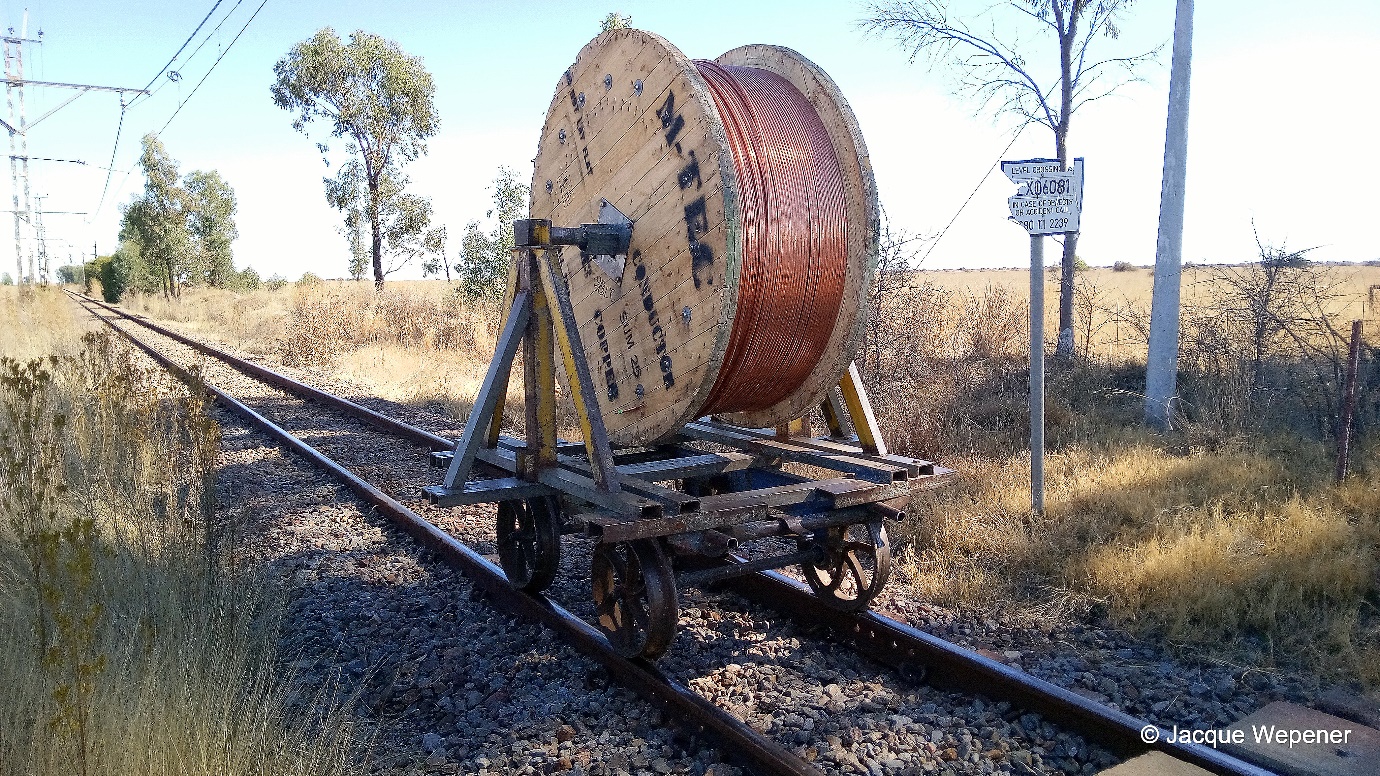Theft: Copper Contact Wire and Its Impact on South African Rail Operations
J & J Wepener

New copper contact wire was recently installed near Klerksdorp due to continuous theft along the section between Klerksdorp and Kimberley, via Warrenton. As a result, Transnet is rerouting traffic from Sentrarand to Vereeniging via Kroonstad, Bloemfontein, and Kimberley, and onwards to Cape Town’s Table Bay Harbour.
The wires in question are the droppers—vertical connectors suspended from the main supply cable above the contact wire. These droppers ensure the contact wire remains level, allowing smooth interaction with the locomotive’s pantograph. When thieves cut and strip the copper wire, the feeder cable begins to sag, causing the droppers to dangle dangerously over the tracks. These often shatter the windscreens of approaching diesel locomotives. Trains are halted, and teams of linesmen are dispatched to remove the loose droppers. In many cases, another locomotive must be sent to replace the one with a damaged windscreen.
A few years ago, despite security personnel being deployed, thieves devised even more elaborate schemes. One notorious method involved purchasing thick SADF canvas tents at army auctions. During the theft of rails along the closed Magaliesburg–Hercules line, a truck equipped with a hydraulic crane and acetylene/oxygen cylinders would stop at intervals along the track. The heavy tents were erected to conceal the torch flame from passing motorists. Once cut to size, the rails were loaded onto the truck and taken to a scrap merchant—only to return for another load before dawn.
Nowadays, theft occurs in broad daylight. Passersby often assume that the administration is uplifting tracks on defunct lines.
Thieves also target low-tension underground cables. They dig a hole, sever the cable with an axe, and attach the loose end to a bakkie, which then speeds away, ripping the cable from the ground. If the cable snaps, another hole is dug and the process is repeated. These cables, ranging from 250V to 800V, supply power for platform lighting, signals, and electric point motors.
In the days when the South African Railways Police (S.A.R. Police) were on duty, such thefts were virtually unheard of. Disbanding the S.A.R. Police was a grave mistake.
Electric traction now ends at Sasolburg, with only diesel traction operating towards Bloemfontein and Kimberley. Due to copper theft, many electric locomotives are staged and unable to be deployed. The reliance on diesel traction introduces numerous operational challenges. With signal systems down, train movements are slower and more cumbersome. Drivers are frequently replaced en route at Sasolburg, Kroonstad, and Bloemfontein.
Electric traction offers distinct advantages—such as regenerative braking. When descending, the driving motors are reversed to generate power fed back into the catenary system. This is especially beneficial in mountainous areas, providing additional power to ascending locomotives.
Diesel locomotives utilize dynamic braking. In this system, electric motors are reversed and produce substantial heat, which is dissipated into the atmosphere. This assists in reducing speed alongside traditional air or vacuum braking systems. However, diesel traction is costly due to the high fuel consumption.
Railway greetings,
John and Jacque